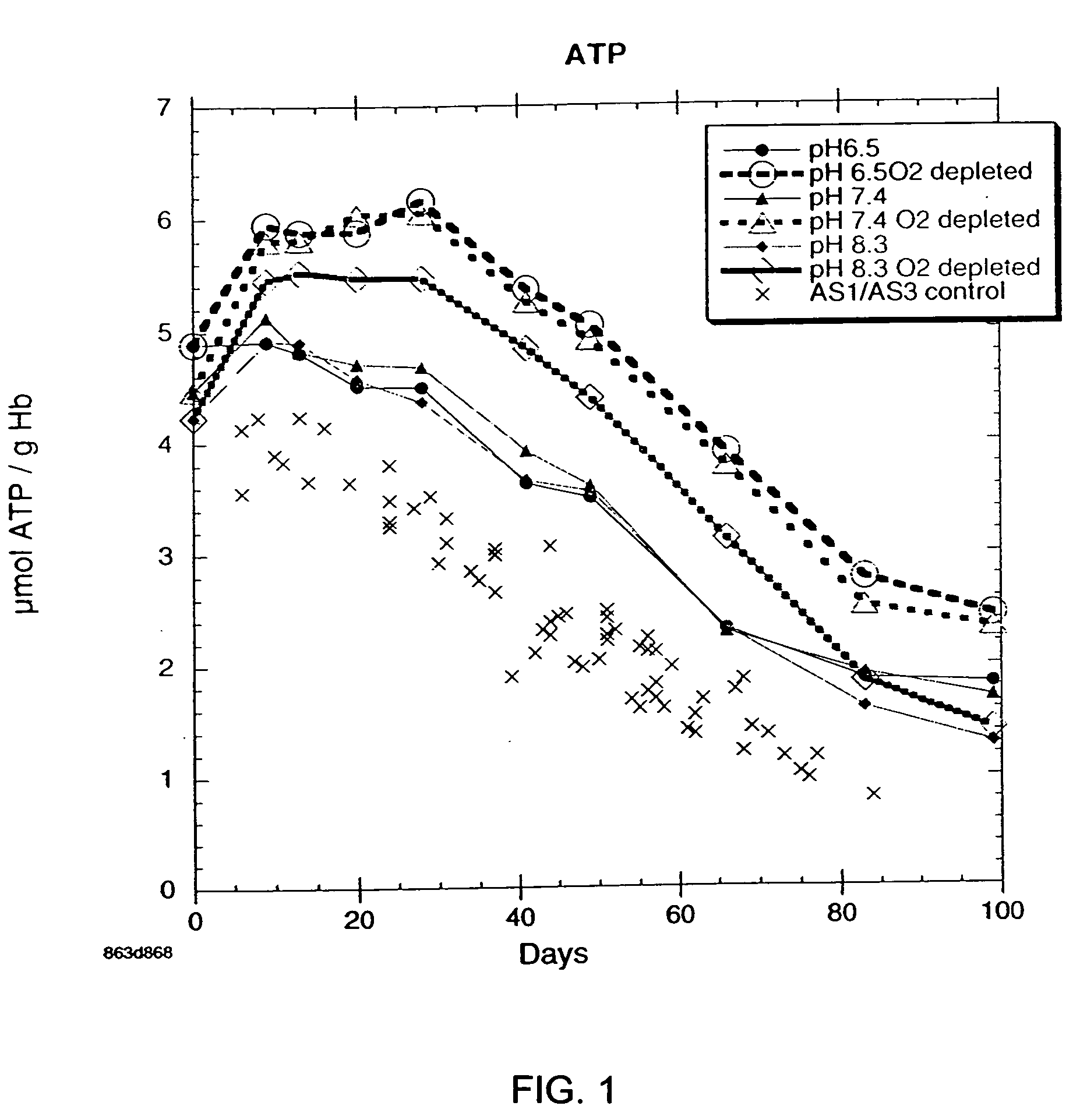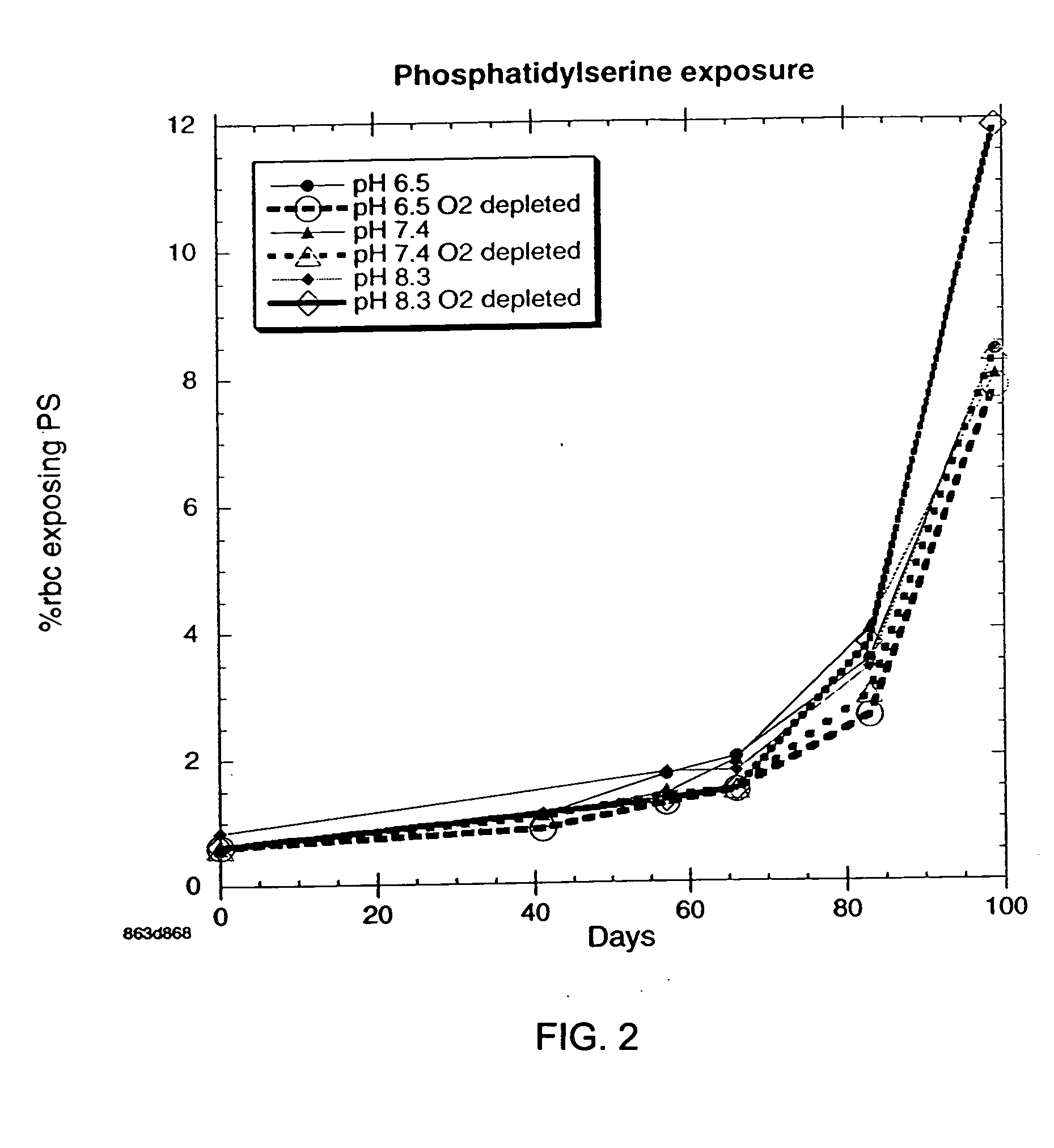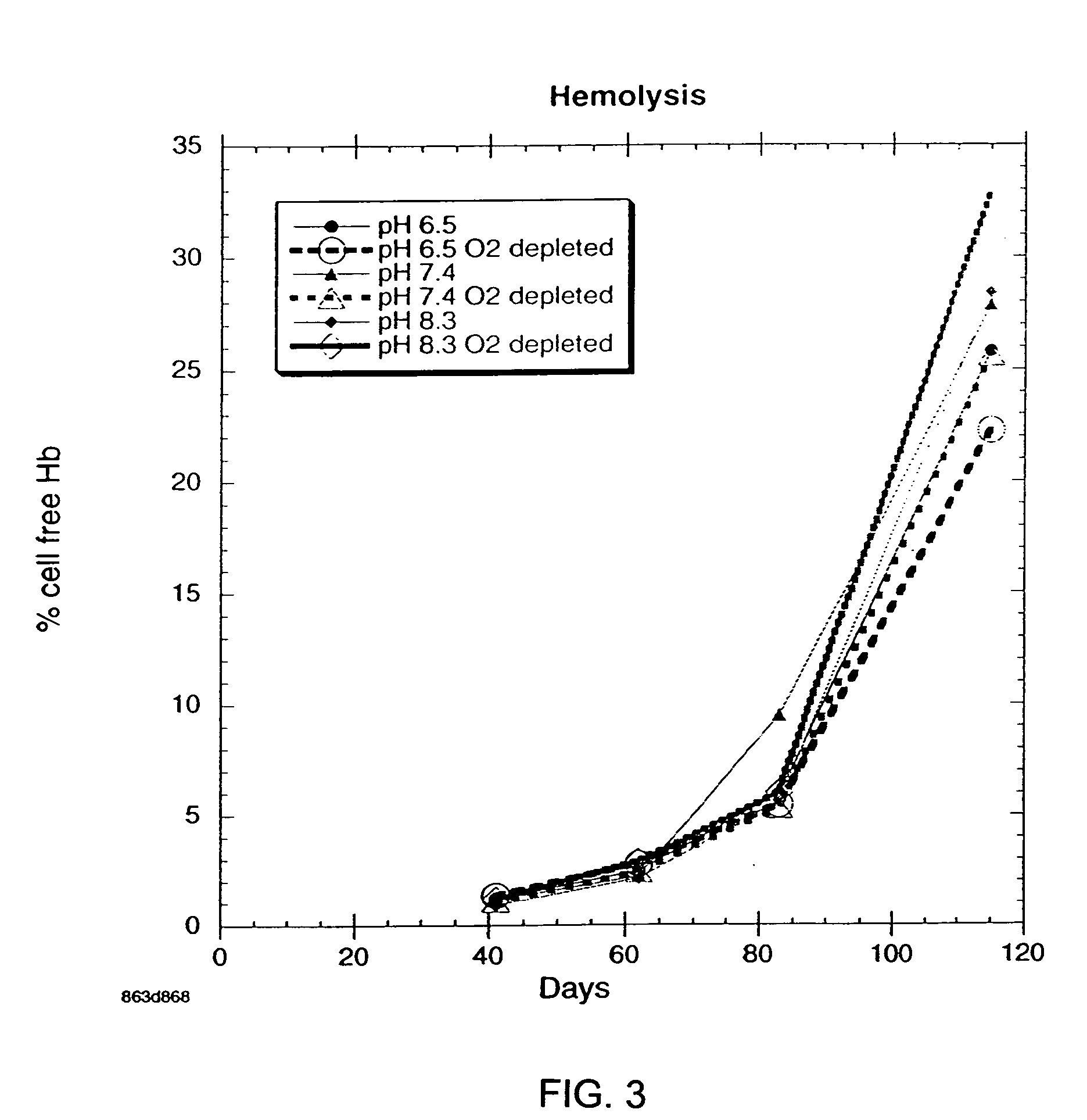Method for extending the useful shelf-life of refrigerated red blood cells by nutrient supplementation
a technology of red blood cells and nutrient supplements, which is applied in the field of preservation of blood in liquid form, can solve the problems of periodic shortages of blood, limited storage of liquid blood, and patients currently cannot collect and store with current technology. , to achieve the effect of prolonging the useful shelf life of red blood cells
- Summary
- Abstract
- Description
- Claims
- Application Information
AI Technical Summary
Benefits of technology
Problems solved by technology
Method used
Image
Examples
example 1
OFAS3: Effect of pH and Oxygen Depletion on Cellular ATP Levels
[0029] Results of experimentation to determine the effect of pH and oxygen depletion on cellular ATP levels with blood samples containing oxygen-free additive solution (OFAS3) are presented in FIG. 1. Each point on the graph is the average of 6 subjects. For comparative purposes, AS1 and AS3, the current U.S. standard additive solution, serve as a control. There is a large variability in the values between different test subjects. In order to see the effect of pH, P values (t-test for paired two samples for means) were calculated and are presented in Table 4.
TABLE 3Pairwise Test of ATP Values(For Oxygen Depleted Storage at Various pH's)TimeP(T P(T (Days)pH 6.5 vs. pH 8.3pH 6.5 vs. pH 7.490.0020.007130.0320.327200.0080.116280.0010.104410.0720.072490.0230.111660.0080.149830.0070.147990.0080.388
Although there are large subject to subject variations in ATP levels, there are significant differences between pH 6.5 and pH 8...
example 2
OFAS3: Effect of pH and Oxygen Depletion on % of Cells Exposing Phosphotidylserine
[0030] Results of experimentation to determine the effect of pH and oxygen depletion on the % of red blood cells exposing phosphotidylserine with samples containing oxygen-free additive solution (OFAS3) are presented in FIG. 2. Data were obtained by flow cytometer measurements using FITC-Annexin IV probe. Each point on the graph is the average of 6 subjects. There is a significant reduction in exposed phosphotidylserine after 10 weeks when pH 8.3 and pH 6.5 blood samples, both oxygen depleted, are compared.
example 3
OFAS3: Effect of pH and Oxygen Depletion on Red Blood Cell Hemolysis
[0031] Results of experimentation to determine the effect of pH and oxygen depletion on red blood cell hemolysis with blood samples containing oxygen-free additive solution (OFAS3) are presented in FIG. 3. Each point on the graph is the average of 6 subjects. Three different pH's were tested, pH 6.5, pH 7.4, and pH 8.3, with control cultures that were not oxygen-depleted. At week 16, the pH 6.5 oxygen-depleted refrigerated red blood cell storage system has the lowest extent of hemolysis.
PUM
| Property | Measurement | Unit |
|---|---|---|
| temperature | aaaaa | aaaaa |
| time | aaaaa | aaaaa |
| mass | aaaaa | aaaaa |
Abstract
Description
Claims
Application Information
 Login to View More
Login to View More - R&D
- Intellectual Property
- Life Sciences
- Materials
- Tech Scout
- Unparalleled Data Quality
- Higher Quality Content
- 60% Fewer Hallucinations
Browse by: Latest US Patents, China's latest patents, Technical Efficacy Thesaurus, Application Domain, Technology Topic, Popular Technical Reports.
© 2025 PatSnap. All rights reserved.Legal|Privacy policy|Modern Slavery Act Transparency Statement|Sitemap|About US| Contact US: help@patsnap.com



